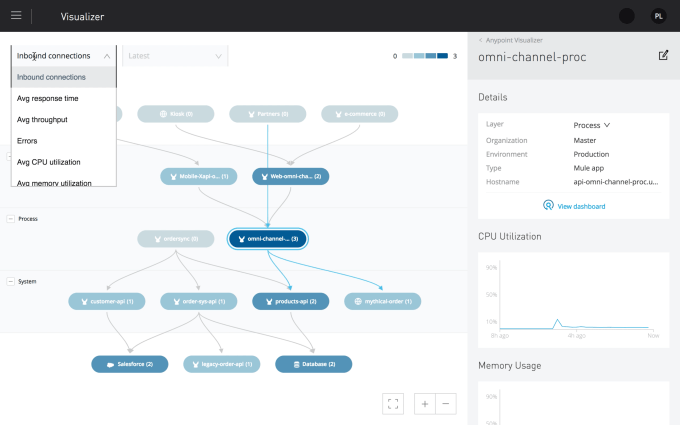When Salesforce bought Mulesoft last spring for the tidy sum of $6.5 billion, it looked like money well spent for the CRM giant. After all, it was providing a bridge between the cloud and the on-prem data center and that was a huge missing link for a company with big ambitions like Salesforce.
When you want to rule the enterprise, you can’t be limited by where data lives and you need to be able to share information across disparate systems. Partly that’s a simple story of enterprise integration, but on another level it’s purely about data. Salesforce introduced its intelligence layer, dubbed Einstein, at Dreamforce in 2016.
With Mulesoft in the fold, it’s got access to data cross systems wherever it lives, in the cloud or on-prem. Data is the is the fuel of artificial intelligence, and Salesforce has been trying desperately to get more data for Einstein since its inception.
It lost out on LinkedIn to Microsoft, which flexed its financial muscles and reeled in the business social network for $26.5 billion a couple of years ago. It’s undoubtedly a rich source of data that the company longed for. Next, it set its sights on Twitter (although Twitter was ultimately never sold, of course). After board and stockholder concerns, the company walked away.
Each of these forays was all about the data, and frustrated, Salesforce went back to the drawing board. While Mulesoft did not supply the direct cache of data that a social network would have, it did provide a neat way for them to get at backend data sources, the very type of data that matters most to its enterprise customers.
Today, they have extended that notion beyond pure data access to a graph. You can probably see where this is going. The idea of a graph, the connections between say a buyer and the things they tend to buy or a person on a social network and people they tend to interact with can be extended even to the network/API level and that is precisely the story that Salesforce is trying to tell this week at the Dreamforce customer conference in San Francisco.

Visualizing connections in a data integration network in Mulesoft. Screenshot: Salesforce/Mulesoft
Maureen Fleming, program vice president for integration and process automation research at IDC says that it is imperative that organizations view data as a strategic asset and act accordingly. “Very few companies are getting all the value from their data as they should be, as it is locked up in various applications and systems that aren’t designed to talk to each other. Companies who are truly digitally capable will be able to connect these disparate data sources, pull critical business-level data from these connections, and make informed business decisions in a way that delivers competitive advantage,” Fleming explained in a statement.

Configuring data connections on Mulesoft Anypoint Platform. Gif: Salesforce/Mulesoft
It’s hard to underestimate the value of this type of data is to Salesforce, which has already put Mulesoft to work internally to help build the new Customer 360 product announced today. It can point to how it’s providing this very type of data integration to which Fleming is referring on its own product set.
Bret Taylor, president and chief product officer at Salesforce, says that for his company all of this is ultimately about enhancing the customer experience. You need to be able to stitch together these different computing environments and data silos to make that happen.
“In the short term, [customer] infrastructure is often fragmented. They often have some legacy applications on premise, they’ll have some cloud applications like Salesforce, but some infrastructure in on Amazon or Google and Azure, and to actually transform the customer experience, they need to bring all this data together. And so it’s a really a unique time for integration technologies, like Mulesoft because it enables you to create a seamless customer experience, no matter where that
data lives, and that means you don’t need to wait for infrastructure to be perfect before you can transform your customer experience.”
No comments:
Post a Comment